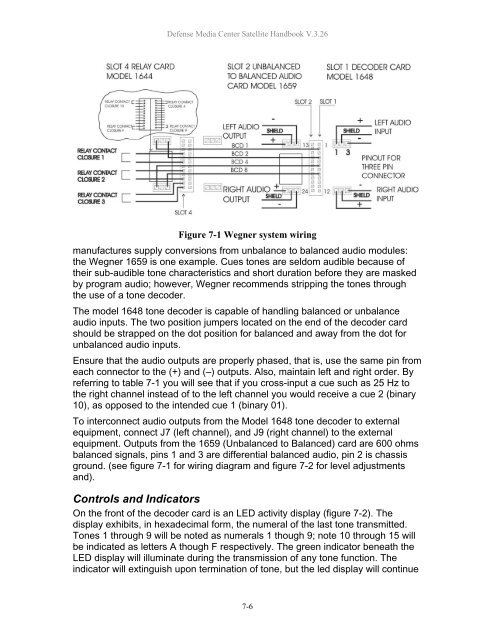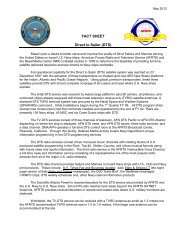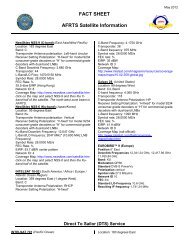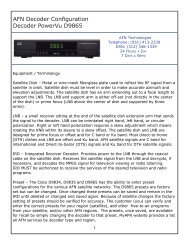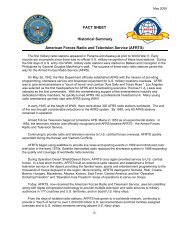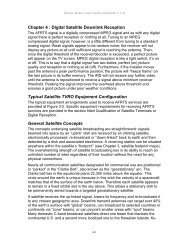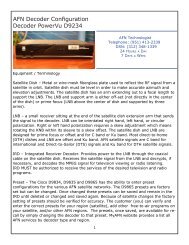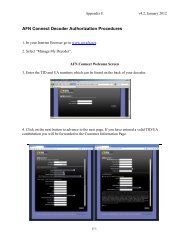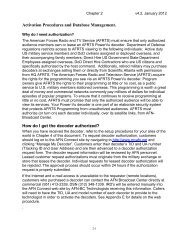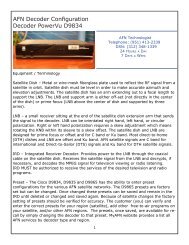AFRTS Defense Media Center Satellite Handbook
AFRTS Defense Media Center Satellite Handbook
AFRTS Defense Media Center Satellite Handbook
Create successful ePaper yourself
Turn your PDF publications into a flip-book with our unique Google optimized e-Paper software.
<strong>Defense</strong> <strong>Media</strong> <strong>Center</strong> <strong>Satellite</strong> <strong>Handbook</strong> V.3.26<br />
Figure 7-1 Wegner system wiring<br />
manufactures supply conversions from unbalance to balanced audio modules:<br />
the Wegner 1659 is one example. Cues tones are seldom audible because of<br />
their sub-audible tone characteristics and short duration before they are masked<br />
by program audio; however, Wegner recommends stripping the tones through<br />
the use of a tone decoder.<br />
The model 1648 tone decoder is capable of handling balanced or unbalance<br />
audio inputs. The two position jumpers located on the end of the decoder card<br />
should be strapped on the dot position for balanced and away from the dot for<br />
unbalanced audio inputs.<br />
Ensure that the audio outputs are properly phased, that is, use the same pin from<br />
each connector to the (+) and (–) outputs. Also, maintain left and right order. By<br />
referring to table 7-1 you will see that if you cross-input a cue such as 25 Hz to<br />
the right channel instead of to the left channel you would receive a cue 2 (binary<br />
10), as opposed to the intended cue 1 (binary 01).<br />
To interconnect audio outputs from the Model 1648 tone decoder to external<br />
equipment, connect J7 (left channel), and J9 (right channel) to the external<br />
equipment. Outputs from the 1659 (Unbalanced to Balanced) card are 600 ohms<br />
balanced signals, pins 1 and 3 are differential balanced audio, pin 2 is chassis<br />
ground. (see figure 7-1 for wiring diagram and figure 7-2 for level adjustments<br />
and).<br />
Controls and Indicators<br />
On the front of the decoder card is an LED activity display (figure 7-2). The<br />
display exhibits, in hexadecimal form, the numeral of the last tone transmitted.<br />
Tones 1 through 9 will be noted as numerals 1 though 9; note 10 through 15 will<br />
be indicated as letters A though F respectively. The green indicator beneath the<br />
LED display will illuminate during the transmission of any tone function. The<br />
indicator will extinguish upon termination of tone, but the led display will continue<br />
7-6


